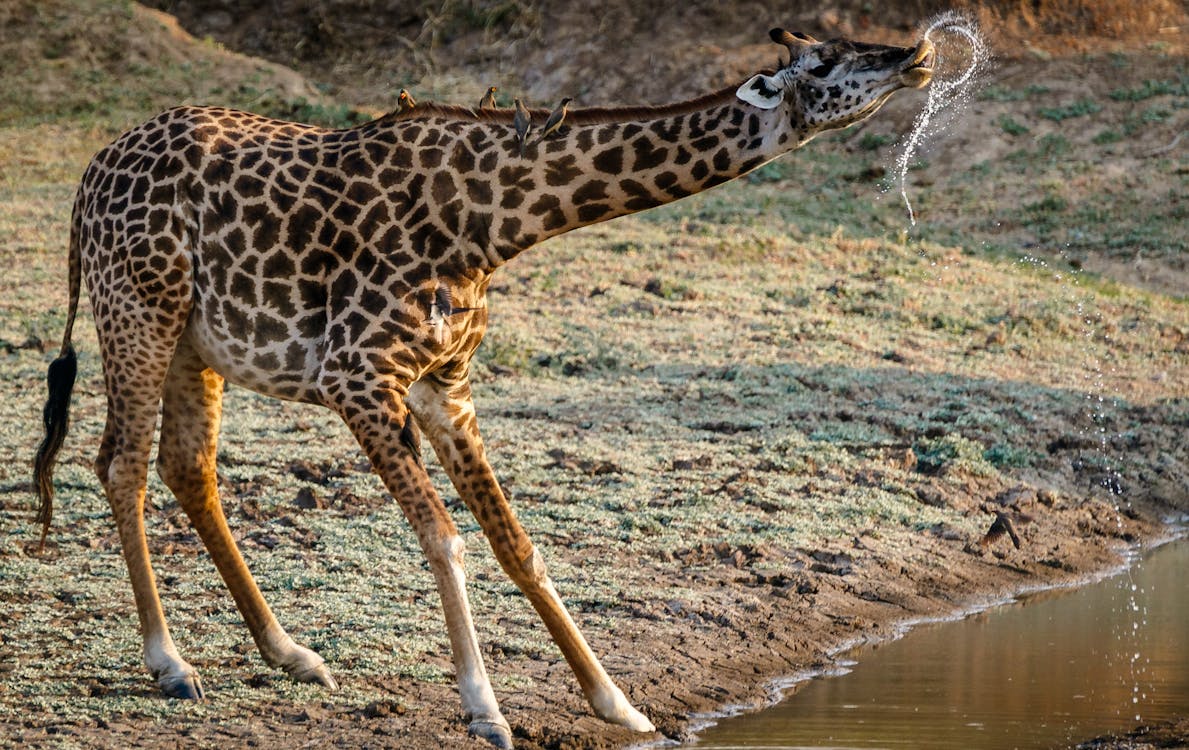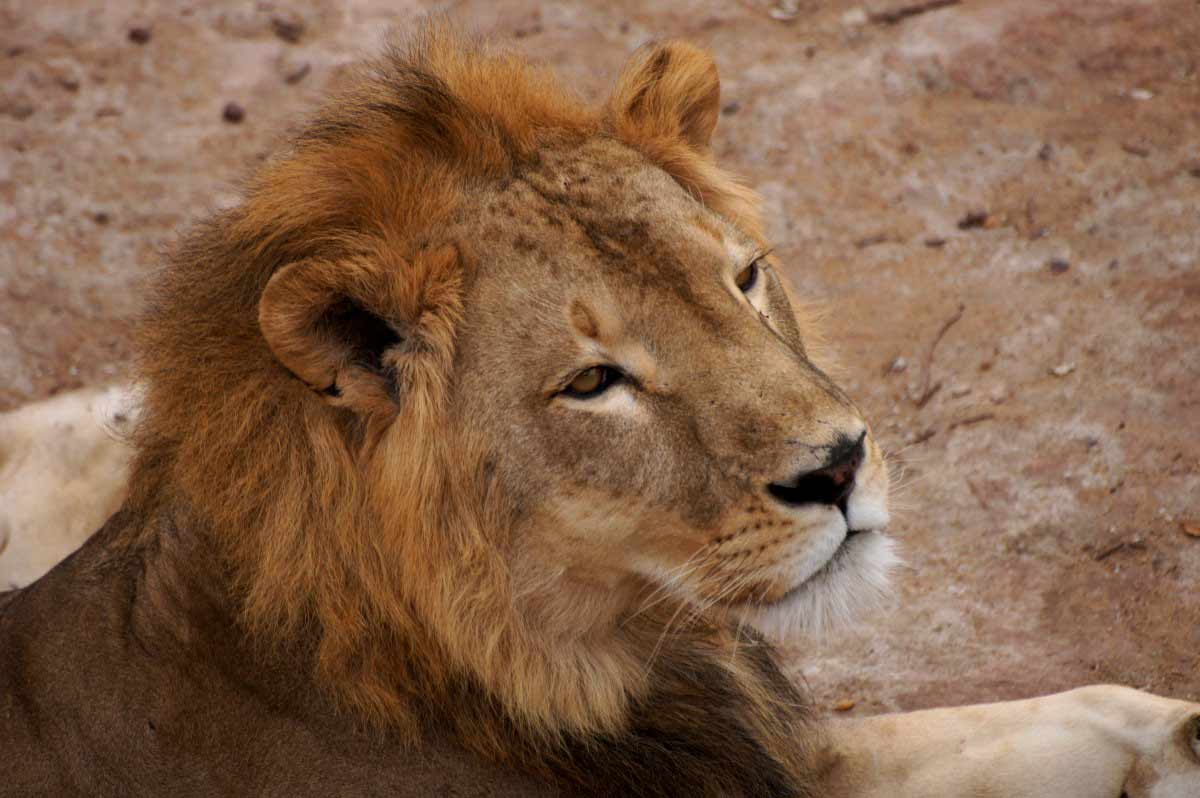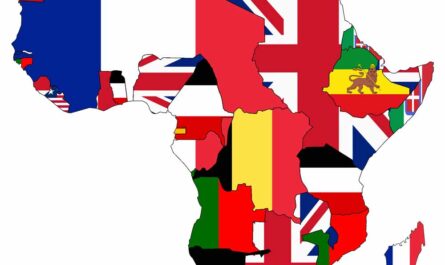What are some of the interesting facts about Zambia? Bordered by eight countries, this landlocked gem boasts a rich tapestry of landscapes, from the mighty Victoria Falls to the vast wilderness of the Zambezi Valley. Its name is derived from the Zambezi River, which courses through its terrain, Zambia encapsulates the spirit of adventure and exploration. The pulsating beat of traditional drums echoes through its bustling markets, where locals trade vibrant fabrics and artisan crafts. Lush national parks, such as South Luangwa and Kafue, teem with wildlife, offering unforgettable safari experiences. Yet, beyond its natural splendor, Zambia embraces a tapestry of cultures, with over 70 ethnic groups coexisting harmoniously. In this article, I will talk about some interesting facts about Zambia.
Interesting Facts About Zambia: History, Culture, Travel
Nestled in the heart of southern Africa, Zambia stands as a land of unparalleled natural beauty and cultural diversity. From the colorful ceremonies of the Ngoni people to the intricate artwork of the Luba-Lunda, each community contributes to Zambia’s rich heritage. With its warm hospitality and untamed wilderness, Zambia beckons travelers to embark on a journey of discovery and enchantment. Here are some interesting facts about Zambia:
1. The Land of the Mighty Zambezi
In the heart of Southern Africa lies the land of the mighty Zambezi River, a lifeline that sustains ecosystems, cultures, and livelihoods across the region. As Africa’s fourth-longest waterway, the Zambezi meanders through Zambia, carving a path of life-giving waters and breathtaking landscapes along its journey.
From its humble origins in northwestern Zambia to its majestic confluence with the Indian Ocean, the Zambezi weaves a tapestry of life and vitality, nourishing lush riverine forests, fertile floodplains, and bustling communities along its banks. As a symbol of resilience and abundance, the Zambezi embodies the spirit of Africa’s wilderness, offering sanctuary to a diverse array of wildlife and providing a source of sustenance and inspiration to all who dwell in its embrace.
2. Victoria Falls’ Breathtaking Majesty
Zambia shares in the awe-inspiring spectacle of Victoria Falls, a natural wonder known as Mosi-oa-Tunya, or “The Smoke That Thunders.” Here, the Zambezi River plunges over a precipice with breathtaking majesty, sending torrents of water cascading into the depths below and creating billowing clouds of mist that can be seen for miles around. As one of the largest and most spectacular waterfalls on the planet, Victoria Falls captivates visitors with its sheer power and beauty, offering a sensory feast of sights, sounds, and sensations. From rainbow-framed vistas to adrenaline-pumping adventures, Victoria Falls beckons adventurers and nature lovers alike to immerse themselves in its timeless splendor and experience the raw power of nature unleashed.
3. A Landlocked Gem
Nestled within the heart of Southern Africa, Zambia shines as a landlocked gem, bordered by a mosaic of neighboring countries that encompass Angola, the Democratic Republic of Congo, Tanzania, Malawi, Mozambique, Namibia, Botswana, and Zimbabwe. Despite its lack of direct access to the sea, Zambia’s landlocked status belies its rich cultural heritage, stunning natural beauty, and vibrant spirit of hospitality.
From the verdant plains of the Zambezi Valley to the rugged contours of the Copperbelt, Zambia’s landscapes offer a tapestry of diversity and wonder, inviting travelers to explore its hidden treasures and forge unforgettable memories in the heart of Africa. As a crossroads of cultures and a sanctuary for wildlife, Zambia embraces its landlocked legacy with pride, celebrating its unique identity and welcoming visitors with open arms to discover the magic of its boundless landscapes.
4. Home to the Fourth Biggest River
Zambia’s majestic landscape is graced by the presence of the mighty Zambezi River, the fourth-largest river in Africa. This impressive waterway not only nourishes the land but also lends Zambia its evocative nickname, “The Land of the Fourth River.” As the lifeblood of the nation, the Zambezi weaves its way through Zambia’s verdant valleys and rugged terrain, bestowing upon the land a sense of vitality and abundance. From its humble beginnings in the heart of the continent to its grand finale at the breathtaking Victoria Falls, the Zambezi River serves as a symbol of resilience and renewal, shaping both the natural world and the cultural identity of Zambia.
5. Copper Rich
Beneath Zambia’s rich soil lies a treasure trove of copper, a resource that has played a pivotal role in shaping the nation’s economy and earning it the moniker “The Copperbelt.” With its vast reserves and extensive mining operations, Zambia stands as one of the world’s leading producers of copper, contributing significantly to the country’s GDP and export earnings.
From the bustling mining towns of the Copperbelt region to the industrial hubs that dot the landscape, the copper industry forms the backbone of Zambia’s economy, providing employment opportunities and driving economic growth. As a testament to the nation’s mineral wealth, Zambia’s landscape is dotted with the towering chimneys and sprawling mines that bear witness to the enduring legacy of copper mining in the region.
6. South Luangwa National Park
Nestled in the heart of Zambia, South Luangwa National Park stands as a beacon of natural beauty and biodiversity, drawing visitors from around the globe to its pristine wilderness. Renowned for its walking safaris, which offer a unique and intimate way to experience the African bush, South Luangwa is hailed as one of Africa’s premier safari destinations. Here, amidst the rugged terrain and meandering waterways, a diverse array of wildlife thrives, from the iconic Big Five to elusive predators like leopards and wild dogs.
As the sun dips below the horizon, casting a golden hue over the landscape, the sights and sounds of the bush come alive, creating a sensory symphony that is both exhilarating and unforgettable. For adventurers and nature enthusiasts alike, South Luangwa National Park offers an unparalleled safari experience that leaves a lasting imprint on the soul.
7. Kalahari Transience
Along Zambia’s western border, the vast expanse of the Kalahari Desert extends its reach, adding a unique ecological dimension to the country’s landscape. Fringing Zambia with its arid embrace, the Kalahari Desert is a land of stark contrasts, where towering sand dunes meet sprawling salt pans and thorny scrubland stretches to the horizon. Despite its harsh and unforgiving environment, the Kalahari teems with life, harboring a diverse array of flora and fauna adapted to its challenging conditions.
From majestic gemsbok and nimble springbok to elusive predators like the black-maned lion, the Kalahari’s inhabitants are a testament to the resilience and adaptability of life in the desert. As visitors venture into this otherworldly realm, they are captivated by the beauty and tranquility of the Kalahari, where time seems to stand still amidst the shifting sands and endless skies.
8. The Kwacha: Zambia’s Currency
At the heart of Zambia’s economic landscape lies the Kwacha, the nation’s official currency and a symbol of its financial identity. As the medium of exchange for goods and services across the country, the Kwacha plays a pivotal role in facilitating commerce, trade, and economic transactions. From bustling urban markets to remote rural villages, the distinctive notes and coins of the Kwacha are a familiar sight, circulating through the hands of merchants, traders, and consumers alike. With its colorful designs and intricate security features, the Kwacha embodies Zambia’s economic resilience and stability, serving as a tangible expression of the nation’s sovereignty and independence.
9. Lusaka: The Bustling Capital
Amidst the dynamic pulse of Zambia’s bustling landscape stands Lusaka, the vibrant capital city that serves as the beating heart of the nation. From its towering skyscrapers to its bustling street markets, Lusaka teems with energy and vitality, offering a captivating blend of modernity and tradition. Here, amidst the grandeur of government buildings and museums, visitors can immerse themselves in Zambia’s rich history and cultural heritage, while the lively markets and bustling streets offer a glimpse into the daily rhythms of urban life. As a melting pot of cultures, ideas, and aspirations, Lusaka embodies the spirit of Zambia’s diverse populace, serving as a beacon of opportunity and innovation in the heart of Southern Africa.
10. Seventeen Official Languages
In Zambia, linguistic diversity is celebrated and embraced through the recognition of seventeen official languages, each reflecting the country’s rich cultural tapestry and heritage. From the lingua franca of English to indigenous languages such as Bemba, Nyanja, and Tonga, Zambia’s linguistic mosaic is a testament to the nation’s cultural diversity and resilience. Across the country, communities communicate and express themselves in their mother tongues, preserving centuries-old traditions and forging connections to their ancestral roots.
Through its embrace of linguistic diversity, Zambia honors the contributions of all its peoples, fostering a sense of unity amidst diversity and ensuring that the voices of its citizens are heard and valued in the tapestry of the nation’s identity.
11. The Warm Hospitality of Zambians
In the heart of Southern Africa beats the warm and welcoming spirit of the Zambian people, renowned for their hospitality and generosity towards visitors. From the bustling streets of Lusaka to the remote villages of the countryside, visitors to Zambia are greeted with open arms and genuine smiles, invited to share in the rich tapestry of Zambian culture and tradition. Whether savoring a home-cooked meal with a local family, sharing stories around a campfire, or dancing to the rhythms of traditional music, guests are embraced as honored guests, treated to a hospitality that knows no bounds.
For Zambians, hospitality is not merely a gesture, but a way of life, rooted in the belief that all guests are gifts from the universe, deserving of kindness, respect, and friendship. As visitors traverse the landscapes of Zambia, they are enveloped in the warmth and hospitality of its people, forging connections and creating memories that last a lifetime.
12. A Young Nation
With its declaration of independence from British colonial rule in 1964, Zambia emerged as a sovereign nation, marking the beginning of a new chapter in its history. Despite its relatively young age, Zambia boasts a rich and vibrant heritage, shaped by centuries of migration, trade, and cultural exchange. From the ancient kingdoms of the Bantu peoples to the colonial era and beyond, Zambia’s history is a tapestry of triumphs and challenges, resilience and adaptation.
As a young nation, Zambia continues to chart its course towards prosperity and development, guided by the principles of democracy, unity, and progress. With each passing year, Zambia’s legacy grows richer, as its people strive to build a future that honors the past while embracing the opportunities of the present.
13. The Dominant Religion
In the spiritual landscape of Zambia, Christianity stands as the dominant religion, shaping the beliefs, values, and practices of the majority of its people. Introduced by missionaries in the colonial era, Christianity has taken root and flourished across the country, with churches of various denominations dotting the landscape. Alongside Christianity, traditional African beliefs and Islam also hold significant sway, reflecting the cultural diversity and religious pluralism of Zambian society.
From vibrant church services and traditional ceremonies to the call to prayer echoing from mosques, Zambia’s spiritual landscape is a tapestry of faiths, each contributing to the rich mosaic of its cultural identity. In this tapestry, diversity is celebrated, and religious tolerance is upheld as a fundamental value, fostering harmony and mutual respect among Zambia’s diverse religious communities.
14. Lake Kariba: A Man-Made Wonder
Stretching across the horizon like a shimmering oasis, Lake Kariba stands as a testament to human ingenuity and the transformative power of nature. Formed by the damming of the mighty Zambezi River in the late 1950s, Lake Kariba is the world’s largest man-made lake by volume, a vast expanse of water that stretches as far as the eye can see.
Here, amidst the tranquil waters and rugged shoreline, visitors are invited to embark on a journey of exploration and adventure, whether it’s boating across the lake, casting a line for trophy fish, or simply basking in the glory of a stunning sunset. As the day fades into night and the stars twinkle overhead, Lake Kariba weaves its magic, casting a spell of serenity and wonder that lingers long after the journey has ended.

15. The Big Five and Beyond
For wildlife enthusiasts and nature lovers, Zambia is a paradise waiting to be explored, offering unrivaled opportunities to encounter the iconic Big Five – lion, elephant, leopard, rhino, and buffalo – in their natural habitat. From the vast plains of South Luangwa National Park to the remote reaches of Kafue and Lower Zambezi, Zambia’s diverse ecosystems teem with a myriad of species, both big and small.
Beyond the Big Five, Zambia’s parks and reserves are home to a rich tapestry of wildlife, including giraffes, zebras, hippos, and countless bird species. Whether embarking on a guided safari, exploring on foot, or drifting down the Zambezi River on a boat cruise, visitors to Zambia are treated to unforgettable wildlife encounters that leave a lasting impression and inspire a deep appreciation for the natural world.
16. Music and Dance: A Cultural Pulse
In the beating heart of Zambia’s cultural landscape, music and dance resonate as vibrant expressions of tradition, community, and identity. From the pulsating rhythms of drums to the graceful movements of dancers, Zambian music and dance are deeply ingrained in the fabric of daily life, weaving a tapestry of sound and movement that reflects the country’s rich cultural heritage.
Whether performed at joyful celebrations, solemn rituals, or communal gatherings, music and dance serve as a means of communication, storytelling, and social cohesion, uniting people across generations and ethnicities. From the lively beats of traditional drumming ensembles to the energetic performances of traditional dance troupes, Zambian music and dance embody the spirit of resilience, creativity, and unity that defines the nation’s cultural identity.
17. The Kalimba’s Soothing Sounds
Amidst the melodic tapestry of Zambian music, the Kalimba emerges as a soulful and enchanting instrument, captivating listeners with its soothing tones and mesmerizing rhythms. Also known as the thumb piano, the Kalimba is crafted from wood and metal, with metal tines arranged in a series of rows that produce distinctive musical notes when plucked with the thumbs.
Popular among musicians and enthusiasts alike, the Kalimba holds a special place in Zambian music, adding depth and texture to traditional melodies and contemporary compositions alike. Whether played as a solo instrument or as part of an ensemble, the Kalimba’s ethereal sounds evoke a sense of tranquility and connection to the rhythms of nature, inviting listeners on a journey of sonic exploration and introspection.
18. Traditional Ceremonies: Preserving Heritage
Zambia’s cultural tapestry is interwoven with a vibrant array of traditional ceremonies, each a colorful celebration of history, spirituality, and community. Among these, the Kuomboka stands out as a testament to the rich heritage of the Lozi people. During this annual event, the Lozi king embarks on a majestic procession across the floodplains of the Barotse region, symbolizing the transition from the dry to the wet season.
Clad in regal attire and accompanied by traditional music and dance, the king’s journey is a spectacle of grandeur and tradition, drawing spectators from far and wide to witness the pageantry and reverence of this ancient ritual. Through ceremonies like the Kuomboka, Zambia honors its cultural legacy, preserving traditions that have been passed down through generations and uniting communities in celebration of their shared heritage.
19. The Importance of Maize: Nourishing the Nation
In the culinary landscape of Zambia, maize reigns supreme as a staple food that sustains and nourishes the nation. From the bustling markets of Lusaka to the rural villages of the countryside, maize is a ubiquitous presence in the Zambian diet, forming the foundation of countless dishes and culinary traditions. Whether ground into mealie meal for the iconic staple nshima or roasted as a crunchy snack, maize plays a central role in both everyday meals and festive feasts.
Beyond its culinary significance, maize holds cultural and symbolic importance in Zambia, representing sustenance, abundance, and community. As a crop that thrives in Zambia’s fertile soils and diverse climates, maize embodies the resilience and resourcefulness of the Zambian people, providing a source of sustenance and livelihoods for generations.
20. Hydropower Potential: Harnessing Nature’s Power
Nestled along the banks of the mighty Zambezi River, Zambia is blessed with abundant hydropower potential that fuels the nation’s energy needs and drives economic growth. From the thundering cascades of Victoria Falls to the tranquil waters of Lake Kariba, the Zambezi River serves as a powerful source of renewable energy, harnessing the kinetic energy of flowing water to generate electricity.
Through a network of hydroelectric dams and power stations, Zambia taps into this vast hydropower potential, providing electricity to homes, businesses, and industries across the country. As a clean and sustainable energy source, hydropower plays a crucial role in Zambia’s energy mix, reducing reliance on fossil fuels and mitigating the impacts of climate change. With its commitment to harnessing nature’s power, Zambia charts a path towards a greener and more sustainable future, where energy access is equitable, affordable, and environmentally responsible.
21. The Makonde Carvings
In the verdant woodlands of Zambia, the Makonde people are celebrated for their masterful craftsmanship and artistic expression, particularly in the realm of wood carving. Renowned for their intricate carvings depicting animals, spirits, and scenes of everyday life, Makonde artisans infuse each creation with a sense of vitality and depth that speaks to the rich cultural heritage of their people.
From graceful animal figurines to elaborate masks and sculptures, Makonde carvings serve as tangible expressions of tradition, spirituality, and community, embodying the collective wisdom and creativity of generations past and present. As visitors explore the markets and galleries of Zambia, they are captivated by the beauty and craftsmanship of Makonde carvings, each piece a testament to the enduring legacy of Zambian artistry and the boundless creativity of the human spirit.
22. The Victoria Falls Bridge: A Symbol of Connectivity
Spanning the tumultuous waters of the Zambezi River, the Victoria Falls Bridge stands as a testament to human ingenuity and engineering prowess, connecting the nations of Zambia and Zimbabwe in a feat of architectural marvel. Built in the early 20th century, this iconic bridge offers not only a vital link between the two countries but also a breathtaking vantage point from which to behold the awe-inspiring spectacle of Victoria Falls.
With its intricate lattice trusses and towering arches, the Victoria Falls Bridge serves as a symbol of connectivity and collaboration, bridging not only the physical divide between Zambia and Zimbabwe but also the shared heritage and aspirations of their peoples. As visitors gaze upon the majestic expanse of the Zambezi River from this historic structure, they are reminded of the enduring bond that unites nations and the boundless possibilities that arise when bridges are built, both literal and metaphorical.
23. Endangered Wildlife: A Call to Action
Despite Zambia’s rich biodiversity and abundant natural resources, the nation faces significant challenges in protecting its endangered wildlife, including iconic species like the black rhinoceros and African wild dogs. Poaching, driven by demand for wildlife products and habitat loss due to human encroachment, poses a grave threat to these vulnerable species, pushing them to the brink of extinction.
As custodians of Zambia’s natural heritage, conservationists and wildlife authorities are tasked with the urgent mission of safeguarding these endangered animals, implementing anti-poaching measures, habitat restoration initiatives, and community-based conservation projects. Through collaborative efforts and targeted interventions, Zambia strives to secure a future where endangered wildlife can thrive in their natural habitats, enriching the nation’s ecosystems and inspiring future generations to cherish and protect their natural heritage.
24. Conservation Efforts: Preserving Zambia’s Natural Legacy
In the face of mounting environmental challenges, national parks and conservation efforts play a vital role in safeguarding Zambia’s diverse wildlife and ecosystems. From the sprawling savannas of South Luangwa to the dense forests of Kafue, Zambia’s protected areas serve as sanctuaries for a myriad of plant and animal species, providing refuge from human encroachment and habitat destruction.
Through sustainable management practices, scientific research, and community engagement, these conservation efforts aim to strike a balance between conservation and development, ensuring that future generations can continue to benefit from Zambia’s natural legacy. As stewards of the land, Zambia remains committed to preserving its biodiversity and promoting coexistence between humans and wildlife, recognizing that the health of its ecosystems is essential for the well-being and prosperity of all its inhabitants.
25. The Importance of Education: Empowering Zambia’s Youth
In the face of myriad challenges, education stands as a beacon of hope and opportunity for Zambia’s youth, driving progress and fostering a brighter future for generations to come. Despite facing obstacles such as limited resources, inadequate infrastructure, and socio-economic disparities, Zambia remains steadfast in its commitment to prioritizing education as a catalyst for development and empowerment.
Through investments in schools, teacher training programs, and educational initiatives, the government of Zambia seeks to equip its youth with the knowledge, skills, and confidence they need to navigate the complexities of the modern world and contribute meaningfully to society. By nurturing a culture of lifelong learning and innovation, Zambia strives to unlock the full potential of its young people, empowering them to overcome obstacles, pursue their dreams, and build a prosperous and inclusive nation.
26. Football (Soccer) Fanatics: Uniting Zambia through Sport
In Zambia, the beautiful game of football, known as soccer in some regions, transcends mere sport to become a powerful force for unity, passion, and national pride. From the dusty playgrounds of rural villages to the bustling stadiums of urban centers, football captures the hearts and imaginations of Zambians of all ages, backgrounds, and walks of life. Whether gathered around a makeshift goalpost or cheering on their favorite teams in electrifying matches, football fanatics in Zambia share a common bond that transcends language, ethnicity, and geography.
As players showcase their skills on the pitch and fans erupt in jubilant celebrations, football becomes more than just a game—it becomes a symbol of solidarity, resilience, and collective identity. Through the highs and lows of competition, Zambia’s love affair with football endures, uniting the nation in a shared pursuit of victory and glory.
27. The Kafue National Park: A Sanctuary of Wildlife Diversity
Nestled in the heart of Zambia’s wilderness, Kafue National Park emerges as a haven for wildlife enthusiasts and nature lovers, offering a diverse array of safari experiences amidst its sprawling landscapes. Renowned for its abundant hippopotamuses and prolific birdlife, Kafue National Park beckons visitors to explore its untamed beauty and discover the wonders of the African wilderness. From game drives and guided walks to boat safaris and birdwatching excursions, the park offers an array of safari activities that showcase its rich biodiversity and stunning scenery.
As visitors traverse the park’s network of rivers, plains, and forests, they encounter a myriad of species, from majestic elephants and elusive leopards to colorful birds and rare antelope. With its commitment to conservation and ecotourism, Kafue National Park stands as a shining example of Zambia’s dedication to preserving its natural heritage for future generations to enjoy and cherish.
28. The Lozi People: Guardians of Barotseland
Inhabiting the picturesque floodplains of Barotseland, the Lozi people stand as guardians of a rich cultural legacy and vibrant traditions that have endured for centuries. With a unique identity shaped by their intimate relationship with the Zambezi River, the Lozi people have forged a deep connection to the land and waterways that sustain their way of life. From the annual Kuomboka ceremony, where the Litunga (king) makes a majestic procession across the flooded plains, to the vibrant music and dance that animate their celebrations, the Lozi people’s cultural heritage is a testament to their resilience, creativity, and unity. How AI, ChatGPT maximizes earnings of many people in minutes
Through their intricate beadwork, traditional attire, and oral storytelling, the Lozi people preserve and pass down their ancestral knowledge and values, ensuring that their cultural legacy continues to thrive in the modern world. As stewards of Barotseland’s natural and cultural heritage, the Lozi people embody a spirit of resilience, community, and reverence for the land that sustains them.
29. The Importance of Family: Pillars of Strength
In Zambian society, family is not just a social unit but a cornerstone of identity, belonging, and support. With a strong emphasis on respect for elders and communal values, family plays a central role in shaping individuals’ lives and fostering a sense of belonging and interconnectedness within the community. From the nurturing bonds of kinship to the collective responsibility for the well-being of all members, Zambian families provide a foundation of love, stability, and guidance that enables individuals to thrive and overcome life’s challenges.
Whether gathering for traditional ceremonies, sharing meals together, or offering a helping hand in times of need, families in Zambia exemplify the values of compassion, resilience, and solidarity that are essential for building strong and vibrant communities. As the bedrock of society, Zambian families embody the spirit of Ubuntu—I am because we are—and uphold the sacred bonds of kinship that bind generations together in love and mutual support.



